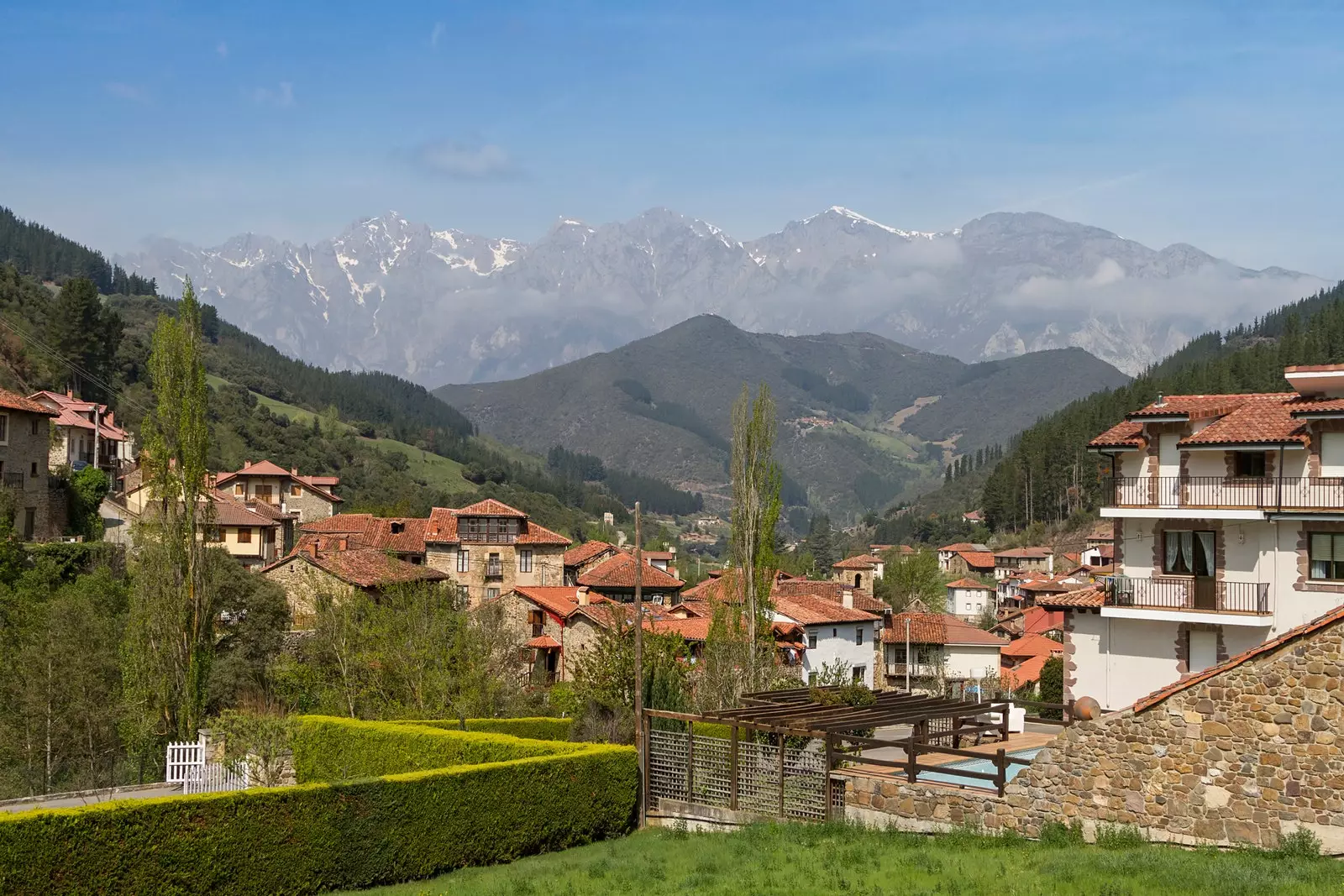
Landscape in the Liébana valley, with the Picos de Europa in the background.
We leave behind the Cantabrian coast to dive into its depths, but also to climb its mountains, that reach 2,600 meters in the central massif of Picos de Europa. During this hectic tour, we discover some of the infinite faces of Cantabria, entering in the region of Liébana, where four valleys converge embraced by rivers and thick forests.
Kilometers before the mountains take over the landscape, the Nansa river path, at the height of the Trascudia hydroelectric plant, offers a wonderful first foray into the nature of the interior of Cantabria. In two and a half hours of walking along the river, towards Puentenansa, or in just 15 minutes by car, We go back 15,500 years before the engravings of the Chufín cave (Currently closed due to the situation caused by COVID-19).
Nearby is also the El Soplao cave, which is accessed by means of wagons that recreate the old entrance to the La Florida Mine. Inside, 13 kilometers of mining and geological history make us doubt whether we are in the depths of the Earth or at the bottom of the sea.
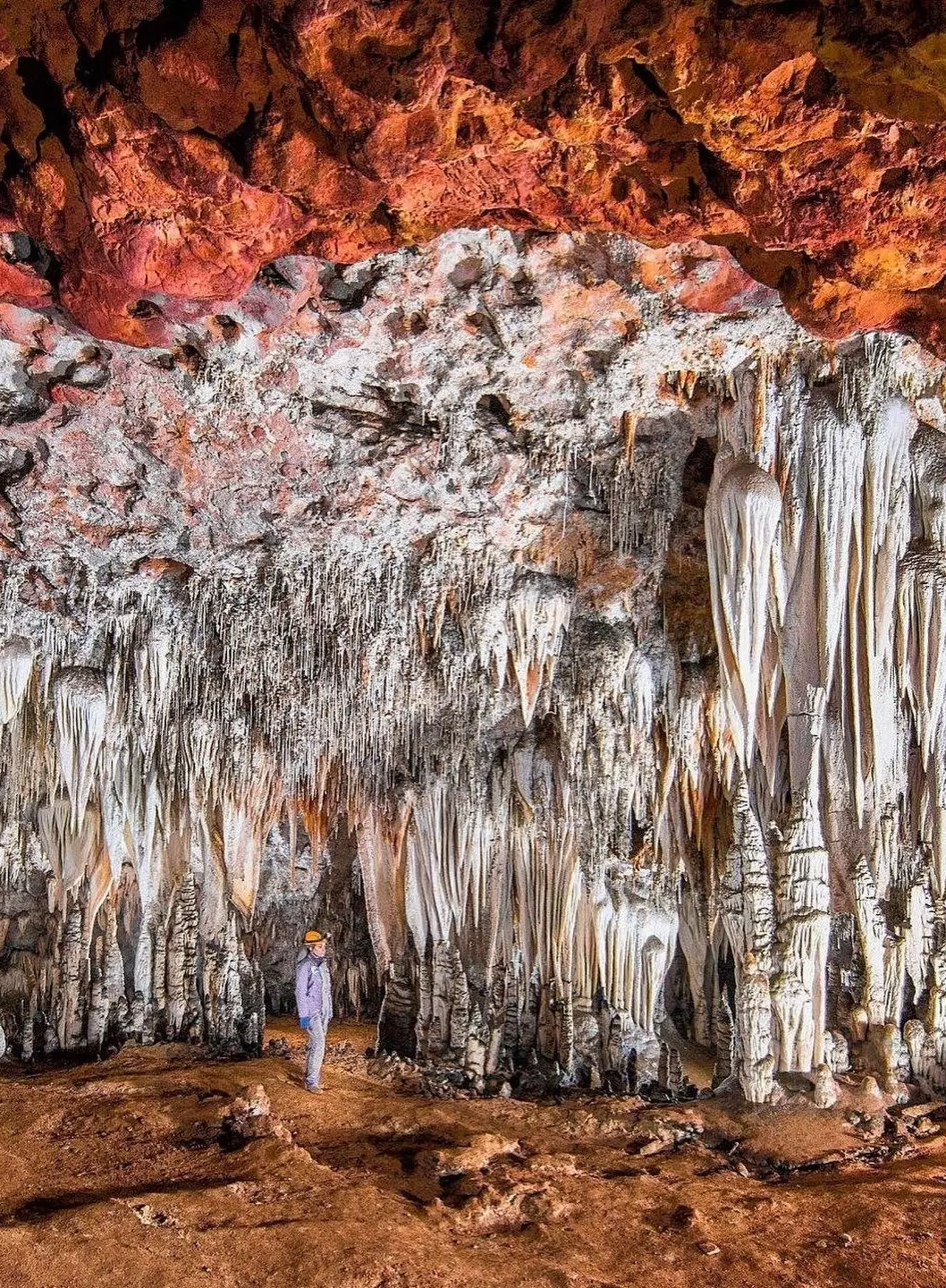
Interior of the El Soplao cave, in Cantabria.
ENJOY EVERYTHING IN LIÉBANA
It's time to put towards Liébana through the Hermida gorge, the longest in Spain. The road that leads to it zigzags close to Asturian lands up to the Santa Catalina viewpoint. From there we anticipate the narrow gorge we are about to cross, 22 kilometers of boxed curves that avoid the Deva river guiding us to the very entrance of the church of Santa María de Lebaña. At the gates of this unique Mozarabic example in Cantabria, a tower and an immortal yew give way to the enthusiastic and entertaining explanations of your guide, María Luisa García.
Surrounded by impassive mountains, and heading for our most desired destination of the trip, we stop time in all the villages that we find on our way: Mogrovejo with a charming stone town center declared an Asset of Cultural Interest, Frama and its church or Cahecho, an essential stop to eat on the panoramic terrace of Casa Lamadrid.
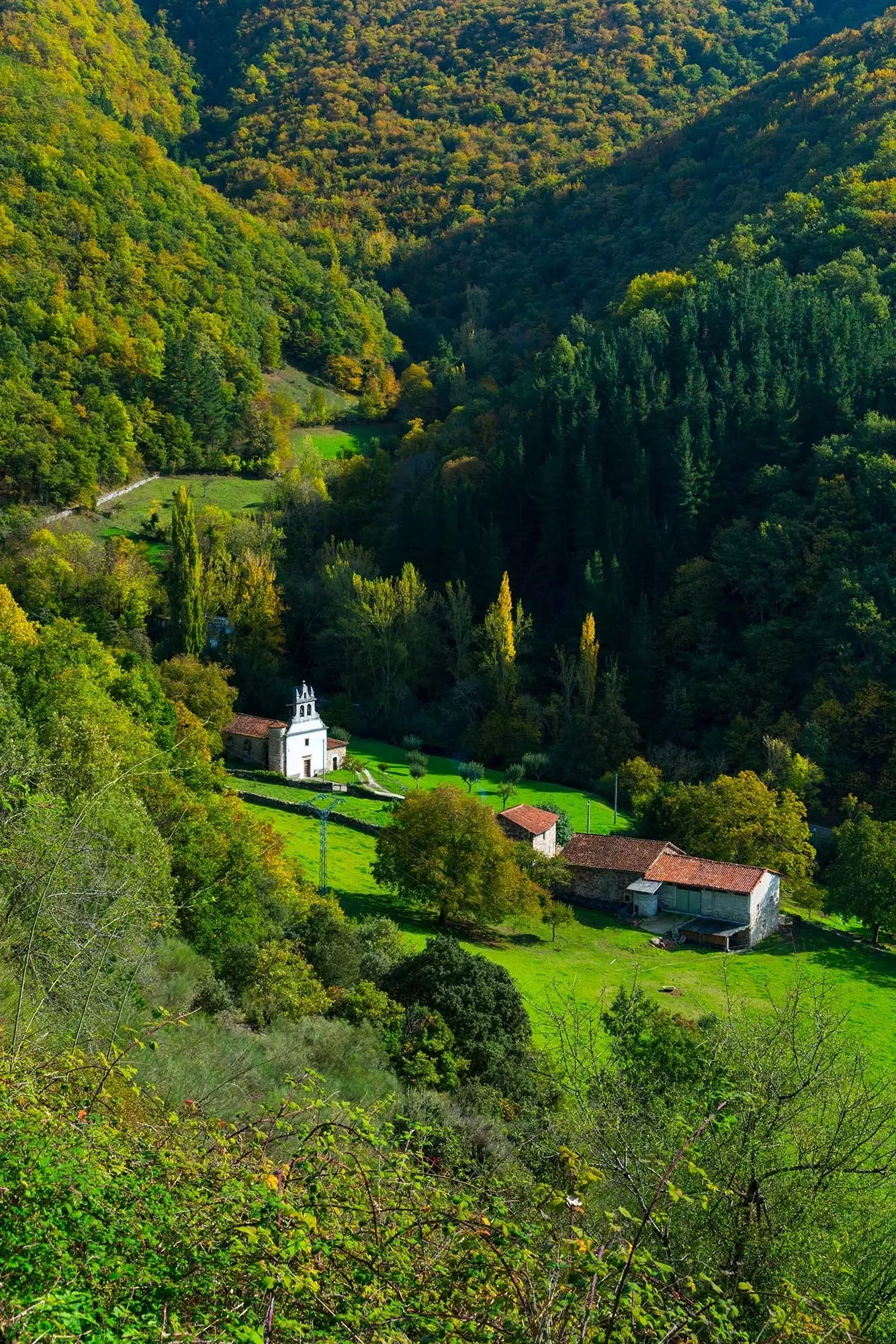
The Liébana Valley is a display of natural beauty.
In Potes we take it with special calm in the Torre del Infantado and in the Santo Toribio de Liébana monastery, one of the main points of Christian pilgrimage. even calmer, we follow the path of the river Deva under the bridge of San Cayetano to then taste the cuisine of the area, with dishes full of tradition such as the Lebanese stew. We even give international cuisine a try, which exceeds our expectations at the exquisite Mexican Las Mañanitas.
Nor can we forget taste the local wines and spirits at the Compañía Lebaniega de Vinos, where they tell us about their crops grown on slopes and we toast with unique drinks such as AS de Picos gin, distilled in alquitara following traditional procedures.
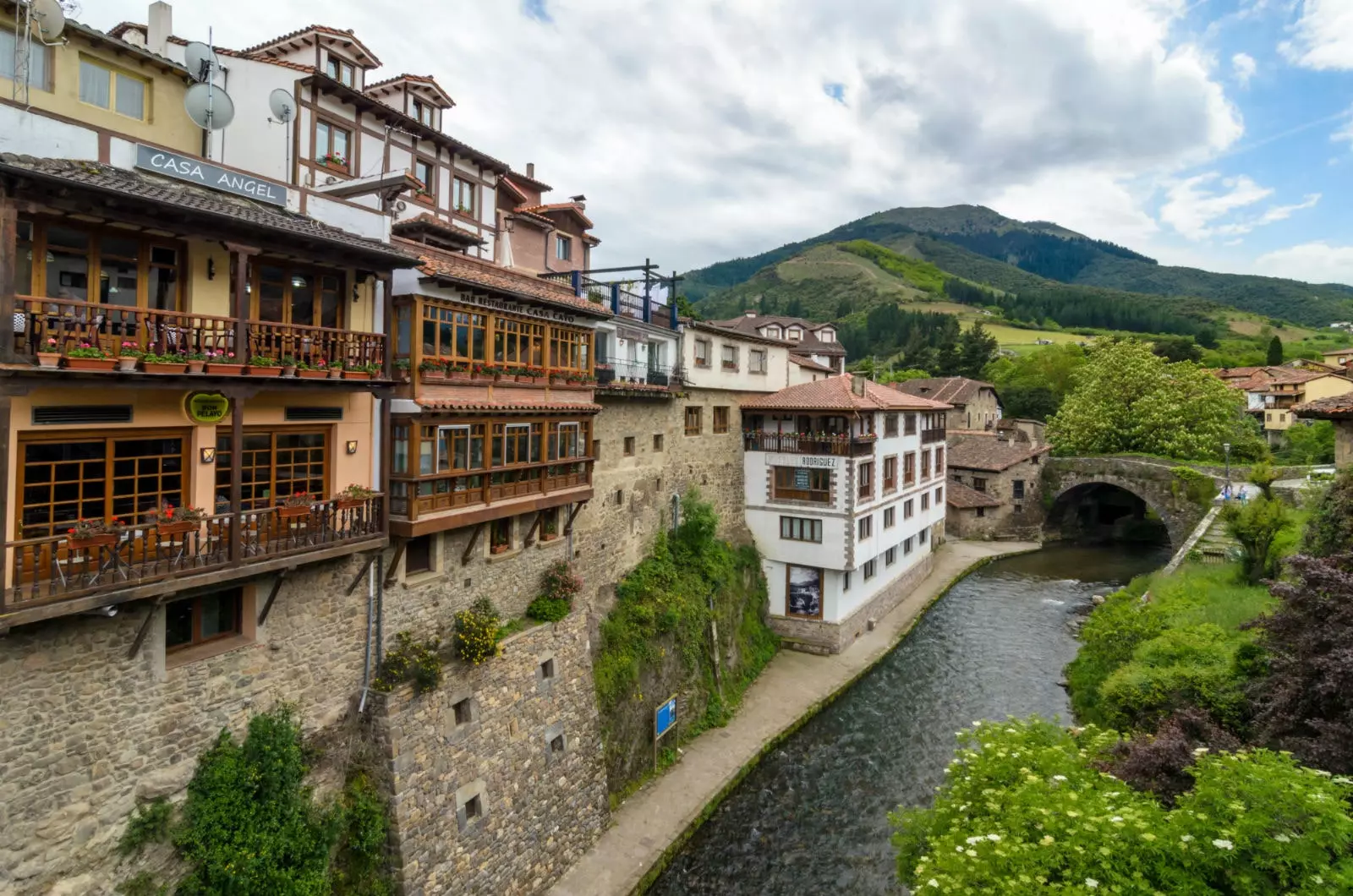
In Potes you have to take the trip calmly.
** CLIMB TO THE CLOUDS **
In any trip through Liébana it is essential get lost in valleys and mountains to discover wonders such as the central massif of the Picos de Europa. If the mountains already impacted in the distance, it is when we approach them that we fall silent, when we colonize their summits, following their abrupt routes winding through impossible paths.
To ascend them we can do it by cable car, although, given the long queues that form, walking up is an interesting option for the most avid hikers. The Fuente Dé cable car was built in 1966 with the aim of saving a drop of 753 meters in three minutes and 40 seconds, time in which we shrink until we disappear inside the clouds before reaching the Cable viewpoint, the beginning of several routes through the second most visited national park in Spain.
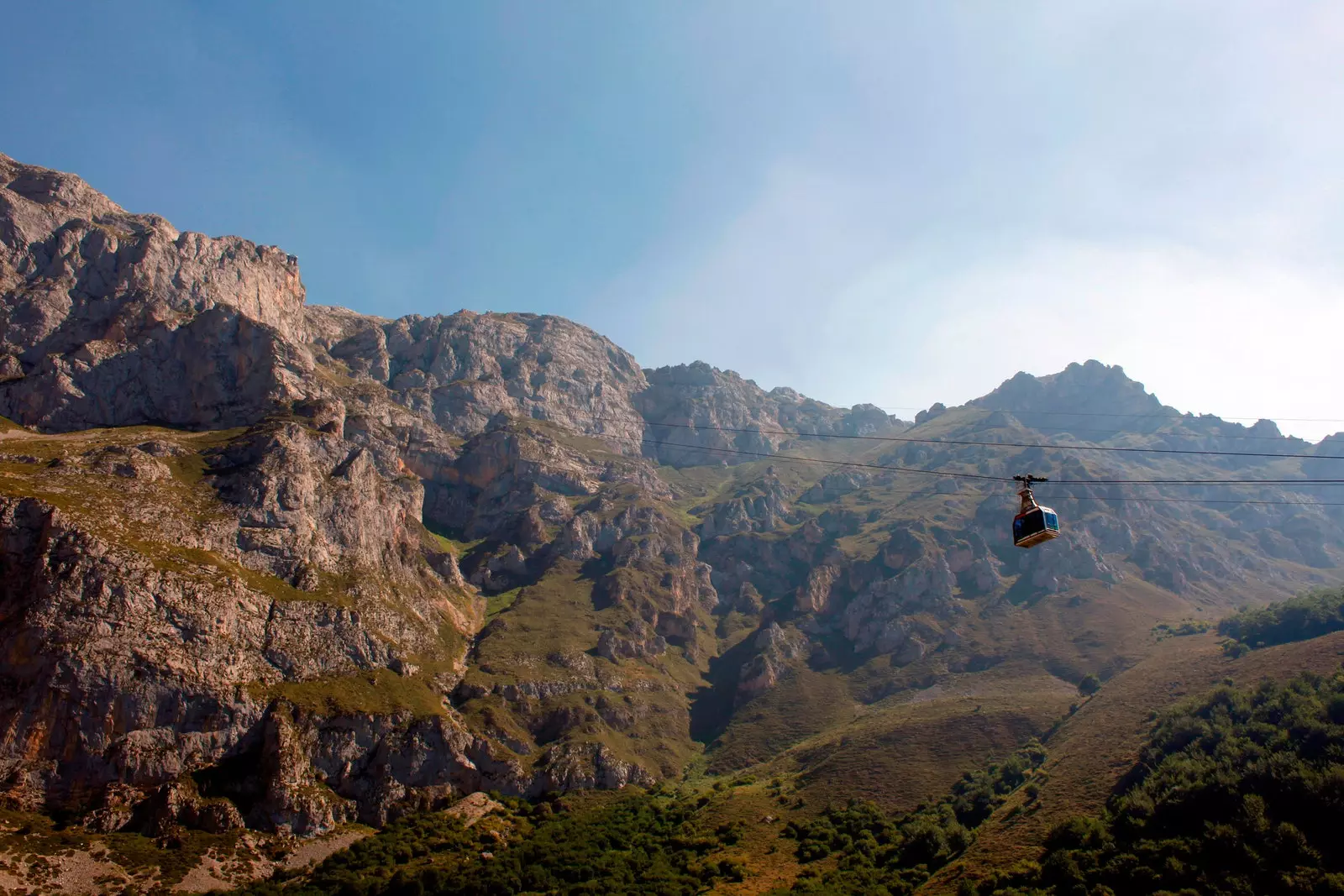
Views of the Fuente Dé cable car, Cantabria.
The excitement is heightened as we reveal the craggy grayish-hued bare peaks in the Urrieles massif, the wildest and steepest of Picos de Europa. The omnipresent grays between the 1,823 meters of the upper station of Fuente Dé and the 2,600 meters of the highest peaks change to green on the way down.
If the descent is part of our route, the secluded stone paths will guide us to the Hotel Áliva, where we will also be tempted to sleep touching the night sky of the mountains. The chosen route continues endlessly along with horses, herds of cows and sheep, streams and an intricate shortcut that dresses the forest paths. Five unforeseen hours of travel that give comforting laces.
From there we can continue towards Palencia through the port of Piedrasluengas, at 1,350 meters above sea level, to stop at its viewpoint in front of those immense conquests that we have just made in Lebanese lands. A blanket of trees hangs over gentle mountains showing us again the great Picos de Europa. Disturbing and seductive, there, in the fog.
